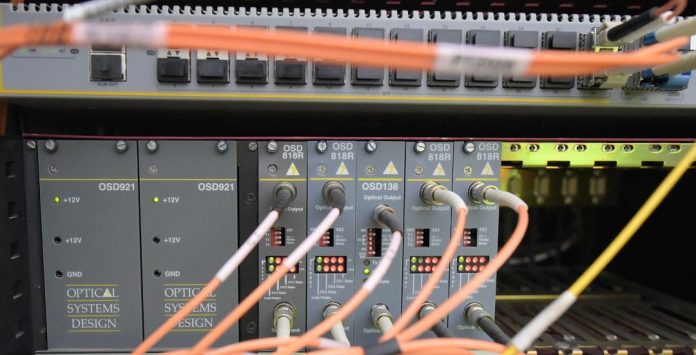After reading SEN’s comments on tools for troubleshooting networks, I wondered what tool would you recommend for very large fibre optic CCTV networks?
A: Trouble in a fibre optic plant typically comes from obvious areas like broken fibres, failure of power supplies for transmitter output/inputs and receiver output/inputs, or from connectors on either side of a fibre link. You could also run into problems with the use of incompatible components.
Finding breaks in a big fibre plant is going to be a real chore unless you use an OTDR. The optical time domain reflectometer works by putting a high-powered pulse of light into a fibre and displaying the signals reflected back. This return signal will be made up of Fresnel reflections from fibre tips, connectors, splices or breaks; and a constant return of Rayleigh backscatter that will vary, depending on the fibre length.
A clever technician can use the digital signal processed readout from the OTDR to map the layout of a fibre plant with complete accuracy. The technician can also use Rayleigh backscatter to work out connector losses as well as overall fibre attenuation. Given its capabilities, the OTDR will also allow technicians to measure the length of a fibre run and to establish the location of breaks in the fibre plant.
Tooling up you’d be looking for an OTDR unit that included an LCD screen, an interface – preferably an IEEE 488 interface, pulse width settings, onboard and removable memory, auto calculation of losses from splices and connector couplings, a programmable core axis refractive index and wavelength selection module switching.
An OTDR is a complex device that includes components like an oscillator, laser driver, directional coupler, oscilloscope, amplifier and control modules. Chat with a tech who knows what’s required for electronic security fieldwork to help with this purchase.
#sen.news











